Geoscience Reference
In-Depth Information
1
1
0.8
0.5
0.6
0
0.4
−0.5
0.2
0
−1
0.4
0.42
0.44
0.4
0.42
0.44
Hk/2
Hk/2
2.2
2
1.8
1.6
1.4
0.4
0.42
0.44
Hk/2
Figure 5.6 Laboratory statistics for the incipient breakers (five steepest waves). IMF
=
1
.
8Hz,
IMS
=
0
.
30,
U
/
C
=
0. (top left panel) Skewness versus steepness. (top right panel) Asymmetry
versus steepness. (bottom panel) Frequency (inverse period) versus steepness. IMF
=
1
.
8Hzisshown
with the solid line
In this regard, it is necessary to highlight that, although the limit
(5.4)
replicates the
Stokes limiting steepness
(2.46)
-
(2.47)
, the dynamical nonlinear waves we observe here
should not be unambiguously identified as Stokes waves. They do exhibit positive skew-
ness
(1.2)
on average, but this skewness goes through oscillations to the extent of waves
periodically becoming almost sinusoidal (
Figures 4.2
,
5.3
). And although their average
vertical asymmetry
(1.3)
is zero, it oscillates too, and for most of the time the wave is
actually asymmetric. Also, the crest geometry is far from the steady pointy 120
◦
corner
flow
(2.48)
, and is likely to be driven by crest instabilities characteristic of very steep
waves (
Longuet-Higgins & Dommermuth
,
1997
;
Longuet-Higgins & Tanaka
,
1997
). A
good illustration of the differences between the stationary Stokes wave and a transient
wave at the breaking onset is
Figure 1.2
. In the measured breaking-onset
Figures 5.4
-
5.5
,
the crest instability is actually visible (the tip of the crest is leaning forward, see also the
simulated maximal-height wave picture in
Dyachenko & Zakharov
(
2005
)).
It should be mentioned, even if in passing, that the limiting steepness of standing waves
at breaking is different to that of the propagating waves. In a series of analytical studies it
was identified as































































Search WWH ::

Custom Search